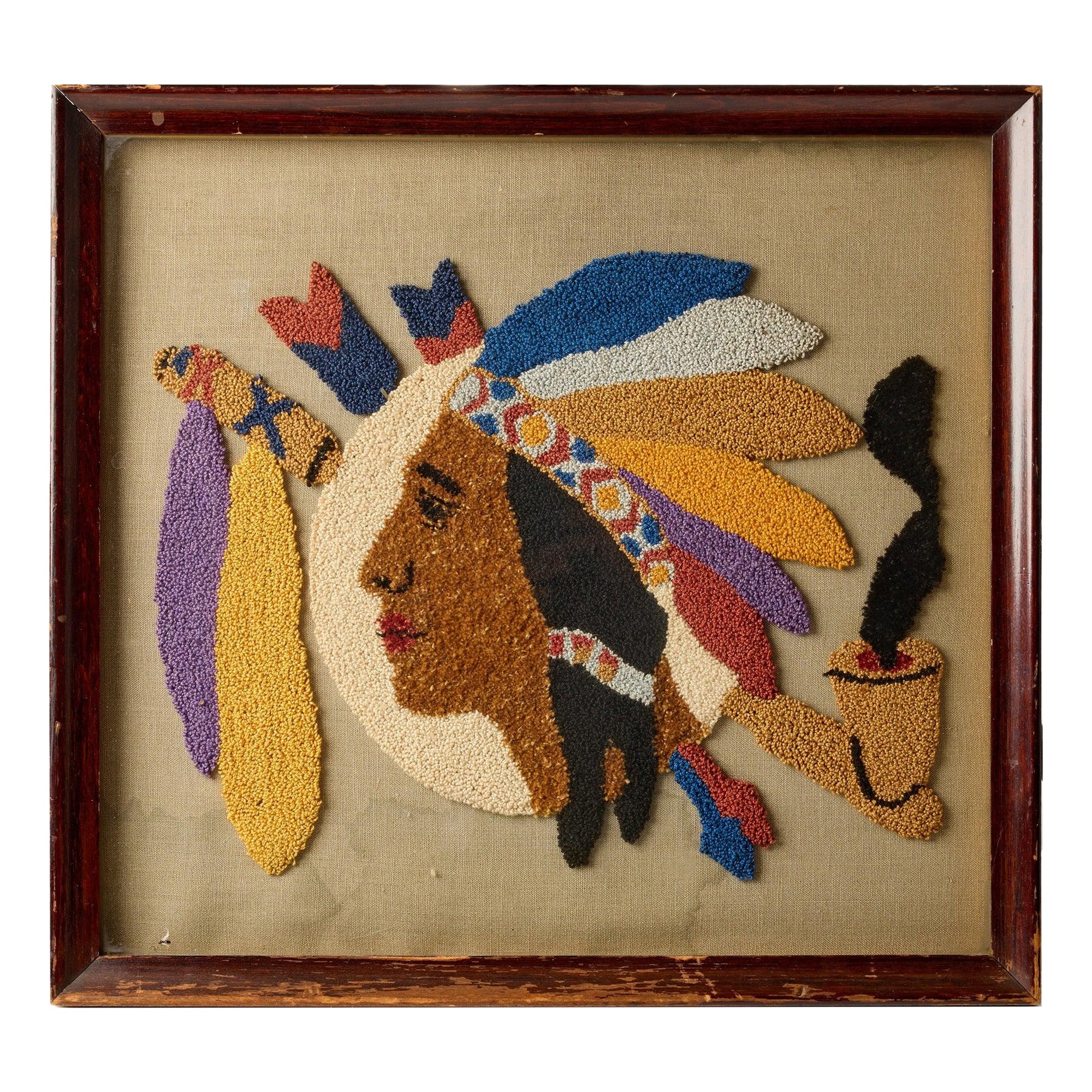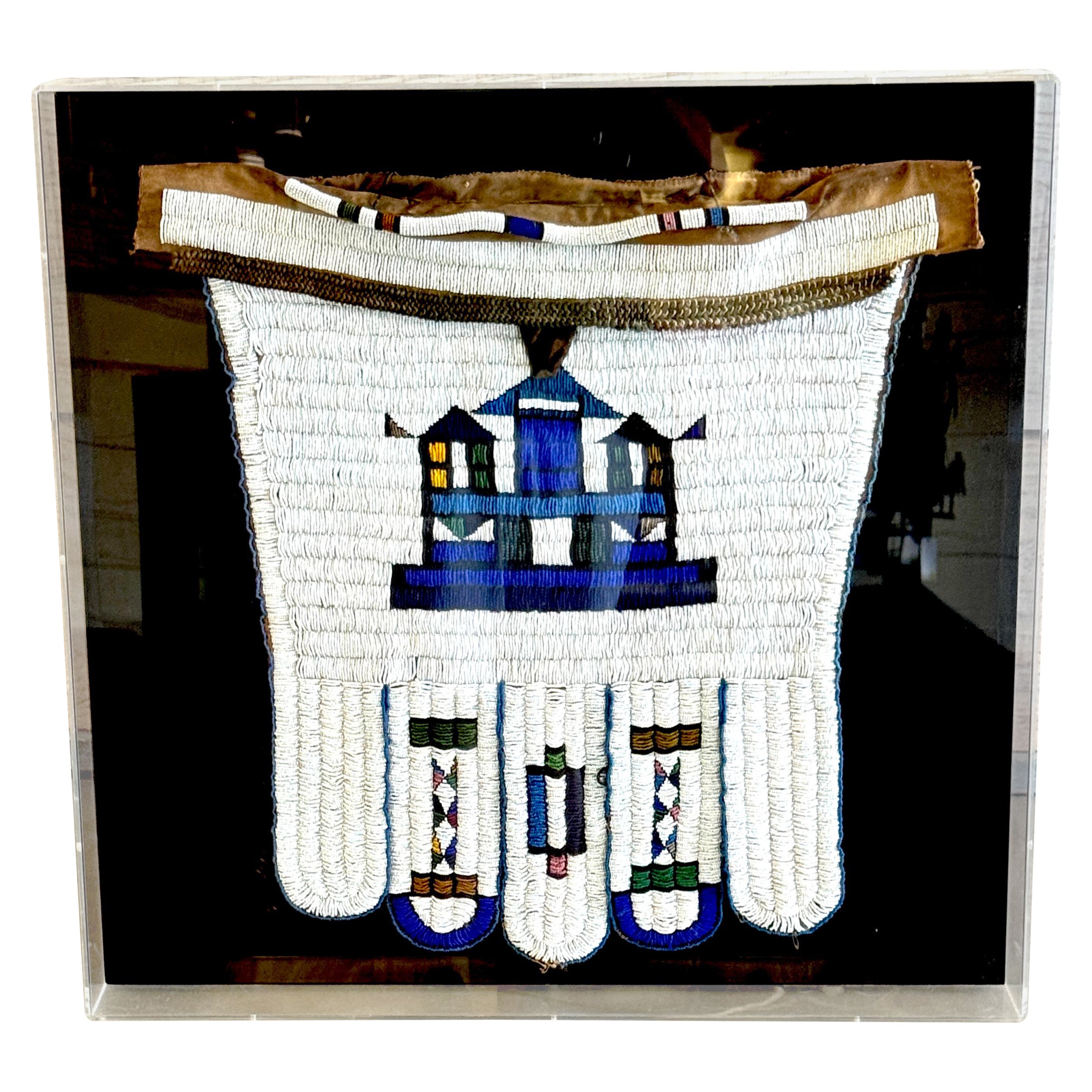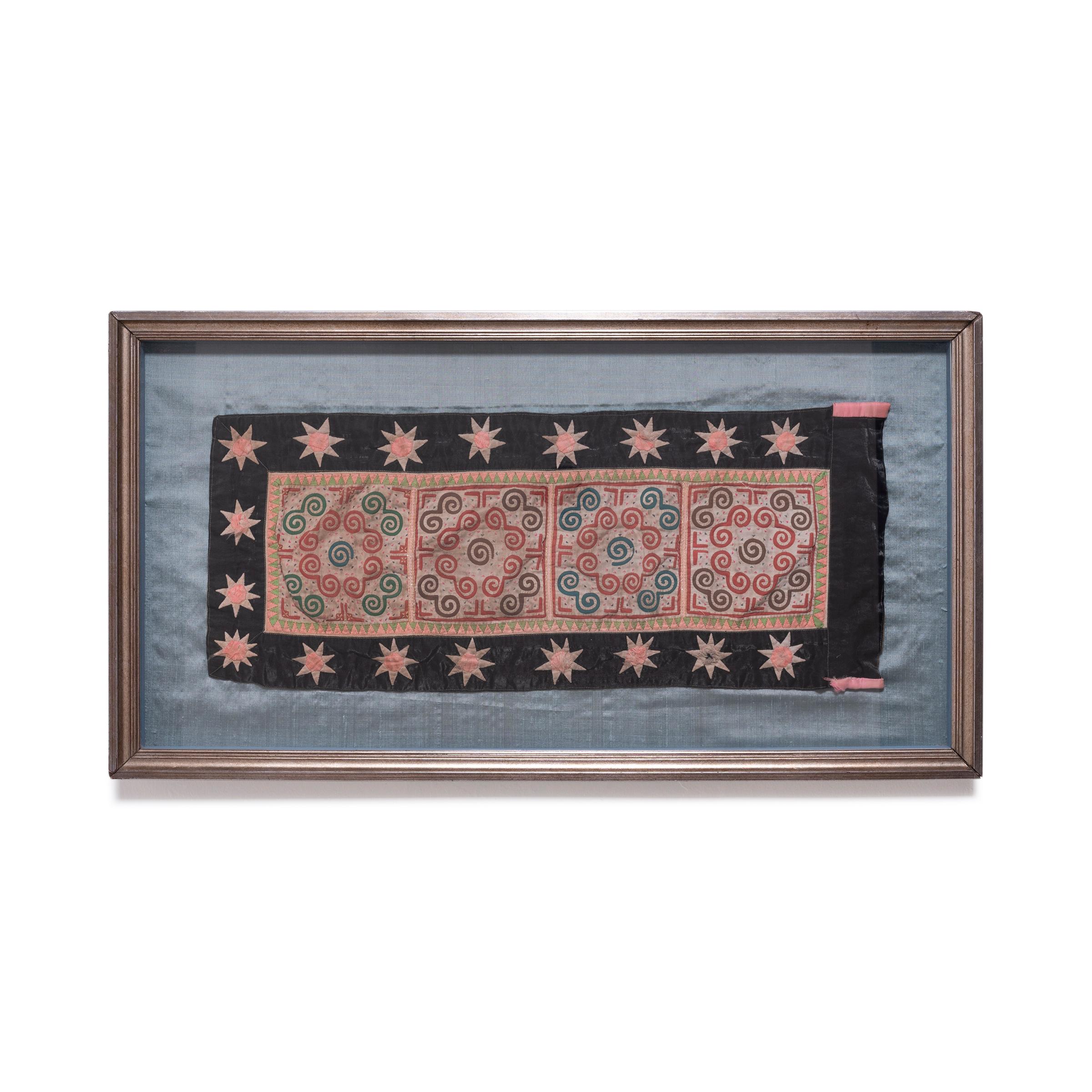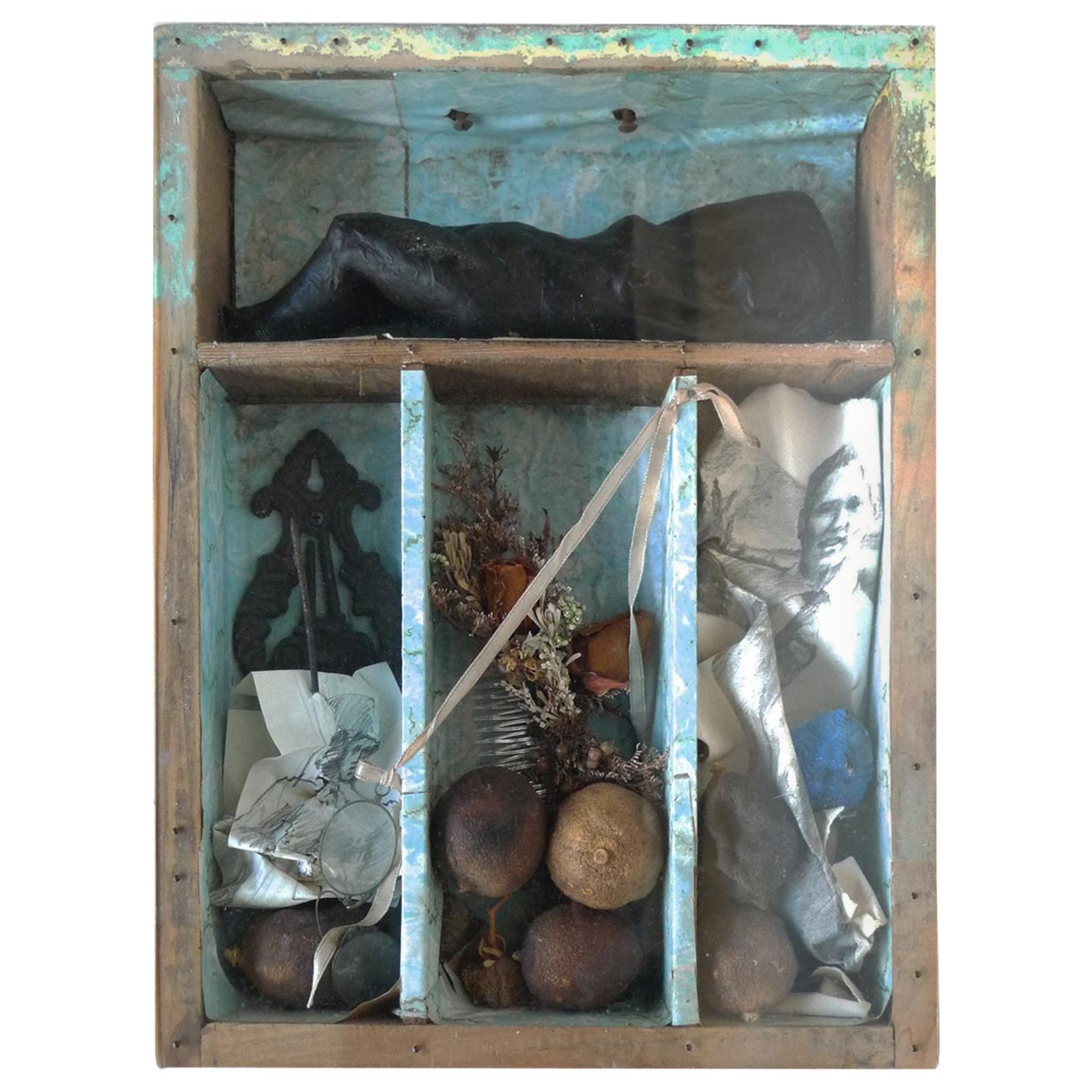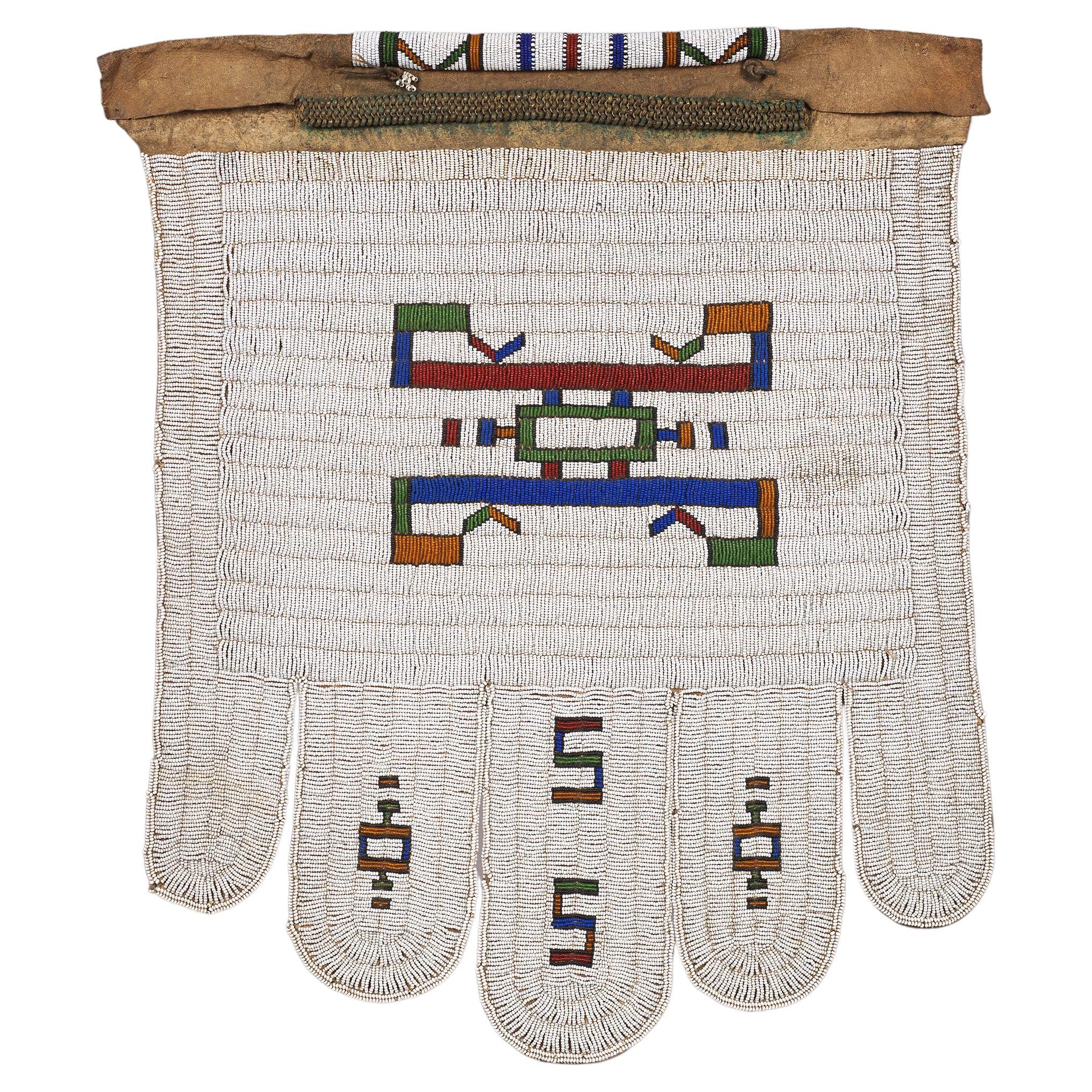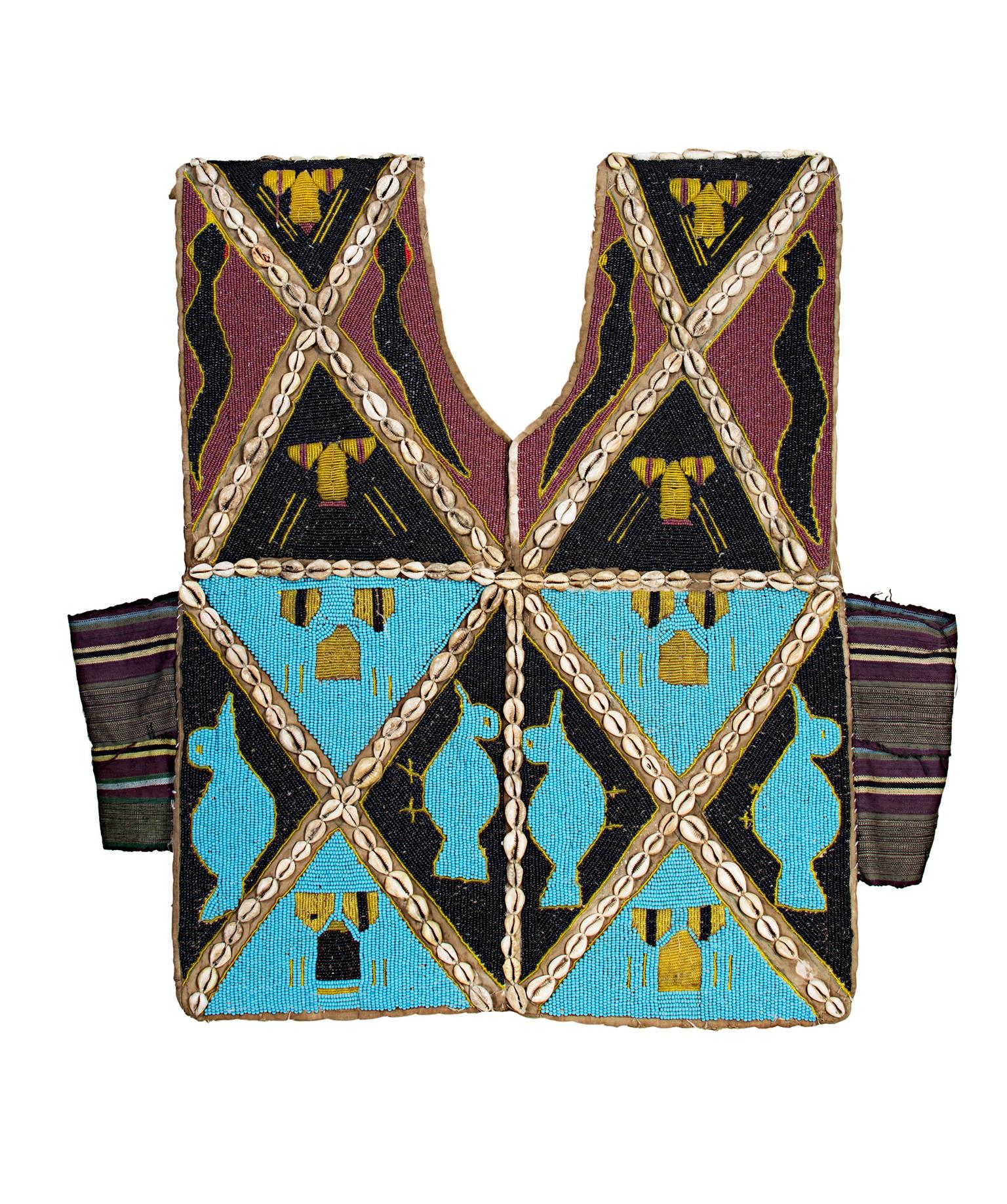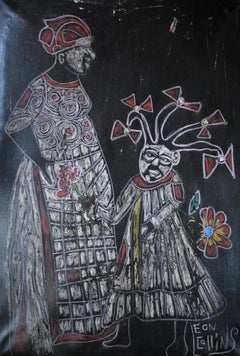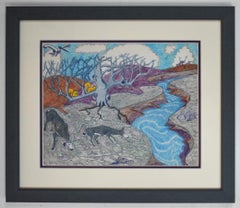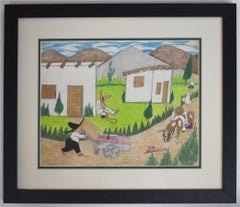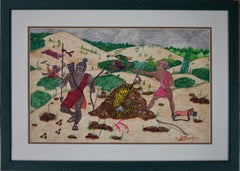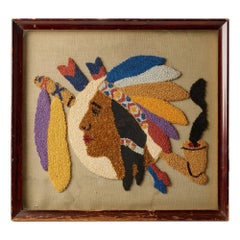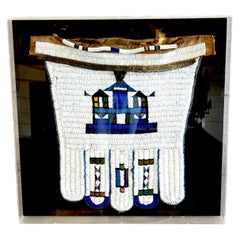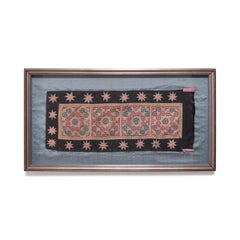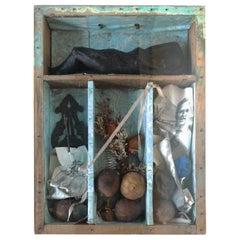Items Similar to Large Shadow Box with Vintage Zulu Art Beadwork
Want more images or videos?
Request additional images or videos from the seller
1 of 8
UnknownLarge Shadow Box with Vintage Zulu Art Beadwork
$4,500
£3,503.55
€3,984.55
CA$6,474.42
A$7,111.87
CHF 3,716.71
MX$84,814.94
NOK 47,063.57
SEK 43,843.68
DKK 29,774.41
About the Item
Zulu Bead work African
Image Size: 47.5 x 29.5 Frame Size: 50 x 32
Medium: Vintage African Bead work Zulu "Belts, Necklaces, Other Bead Work
Nice selection of vintage Zulu bead work items housed in a ready to hang large shadow box. Sorry we don't know the date of the items but can tell you that the gentleman stopped collecting in the 1960s.
Please view my store front for other Great Vintage Texas Paintings & Fine American Art. We carry Vintage, Mid Century & Contemporary
- Dimensions:Height: 50 in (127 cm)Width: 42 in (106.68 cm)Depth: 5 in (12.7 cm)
- Period:
- Condition:Please view my store front for other Great Vintage Texas Paintings & Fine American Art. We carry Vintage, Mid Century & Contemporary.
- Gallery Location:San Antonio, TX
- Reference Number:1stDibs: LU76932395963
About the Seller
5.0
Vetted Professional Seller
Every seller passes strict standards for authenticity and reliability
Established in 1974
1stDibs seller since 2017
102 sales on 1stDibs
Typical response time: 1 hour
- ShippingRetrieving quote...Shipping from: San Antonio, TX
- Return Policy
More From This Seller
View All"MOTHER AND DAUGHTER" TEXAS BLACK FOLK ART FRAMED 38 x 26 AFRICAN AMERICAN
By Leon Collins
Located in San Antonio, TX
Leon Collins
(Born 1930)
Galveston / Navasota Texas Artist
Image Size: 38 x 26
Medium: Oil on Canvas
"Mother and Daughter"
Leon Collins
Birthdate Unknown
Galveston / Navasota Texas A...
Category
21st Century and Contemporary Impressionist Figurative Paintings
Materials
Oil
"THE LONELY WILD" BLACK FOLK ARTIST FROM SAN ANTONIO TEXAS (1912-1988)
By Johnny Banks
Located in San Antonio, TX
Johnny Banks
(1912-1988)
San Antonio Artist
Size: 11 x 14
Frame: 17 x 20
Medium: mixed media
Dated 1979
"The Lonely Wild"
Biography
Johnny Banks (1912-1988)
In my opinion one of the greatest Texas folk artists of all time.
The following information was compiled and submitted by Stephanie Reeves:
John Willard Banks, San Antonio, Texas, African American Folk...
Category
1970s Folk Art Mixed Media
Materials
Color Pencil, Crayon, Mixed Media
"TAMALE CART" BLACK FOLK ARTIST FROM SAN ANTONIO TEXAS ARTIST
By Johnny Banks
Located in San Antonio, TX
Johnny Banks
(1912-1988)
San Antonio Artist
Image Size: 10.5 x 13.5
Frame Size: 17.25 x 20.25
Medium: Multimedia
"Tamale Cart"
Biography
Johnny Banks (1912-1988)
In my opinion one of...
Category
20th Century Folk Art Mixed Media
Materials
Color Pencil, Crayon
"The Sarari Hunt for the Man Eating Tiger " Texas Black Folk Artist Johnny Banks
By Johnny Banks
Located in San Antonio, TX
Johnny Banks
(1912-1988)
San Antonio Artist
Image Size: 14 x 22
Frame Size: 21 x 29
Medium: mixed media
Circa 1970s
"The Safari Hunt for the Man Eating Tiger"
Biography
Johnny Banks (1912-1988)
In my opinion one of the greatest Texas folk artists of all time.
The following information was compiled and submitted by Stephanie Reeves:
John Willard Banks, San Antonio, Texas, African American Folk Artist John
Willard Banks, black self-taught artist, the son of Charlie and Cora
Lee (McIntyre) Banks, was born on November 7, 1912, near Seguin, Texas.
At the age of five his parents took him to San Antonio, where he
attended Holy Redeemer School until the age of nine, when his parents
were divorced and John returned to his grandparents' farm near Seguin.
From childhood Banks's favorite pastime was drawing pictures on his Big
Chief tablet. He later recalled, "As a kid I used to lie flat on my
stomach, drawing and drawing. . . . My mother had to kick me off the
floor to sweep."
While helping out on his grandparents' farm,
Banks completed the tenth grade before striking out on his own. His
favorite activities during his youth were singing in a gospel quartet
and playing baseball. In his adult years he worked in oilfields and
cotton fields, drove a truck, and tended a San Antonio service station.
During World War II he joined the army; he held the rank of sergeant
and was stationed in the Philippines. After the war he returned to San
Antonio, where he worked as a custodian at Kelly Air Force Base, at Fort
Sam Houston, and at a local television station. Banks married Edna Mae
Mitchell in 1928, and they had five children. The marriage ended in
divorce around 1960. In 1963 he married Earlie Smith.
His
art career began in 1978 while he was recuperating from an illness for
which he had been hospitalized. Banks's wife admired her husband's
drawings and secretly took several of them to a San Antonio laundromat.
There she hung the drawings on the wall, offering them for sale at the
price of fourteen dollars. They were purchased and taken to a gallery
for framing. Quite by chance, a San Antonio physician and collector of
works of art by black artists...
Category
1970s Folk Art Landscape Paintings
Materials
Crayon, Mixed Media
"THE BANKS" PREMEIR BLACK FOLK ARTIST JOHNNY BANKS DIED 1988
By Johnny Banks
Located in San Antonio, TX
Johnny Banks
(1912-1988)
San Antonio Artist
Image Size: 13.5 x 11.75
Frame Size: 19.5 x 17.75
Medium: Mixed Media
Dated 1986
"The Banks"
Biography
Johnny Banks (1912-1988)
In my opin...
Category
20th Century Folk Art Mixed Media
Materials
Color Pencil, Mixed Media
"MOUNTAIN HOME" PREMEIR BLACK FOLK ARTIST JOHNNY BANKS DIED 1988
By Johnny Banks
Located in San Antonio, TX
ohnny Banks
(1912-1988)
San Antonio Artist
Image Size: 11 x 14
Frame Size: 17.75 x 20.75
Medium: Multimedia on Paper
"Mountain Home"
Biography
Johnny Banks (1912-1988)
In my opinion ...
Category
20th Century Folk Art Mixed Media
Materials
Color Pencil
You May Also Like
Native American Embroidery from USA
Located in Sagaponack, NY
Native American Chief with multi colored feather headdress and a smoking pipe.
Category
21st Century and Contemporary American More Folk Art
Materials
Wood
Framed Mid-20th C. Lakota (Sioux) Beaded Saddle Bag Panel, Museum Mounted
By Sioux Indian Art
Located in West Palm Beach, FL
Framed Mid-20th C. Lakota (Sioux) Beaded Saddle Bag Panel, Museum Mounted, Attributed to the Lakota, Plains Region, circa 1940s–1960s.
A striking example of mid-20th century Plains beadwork, this Lakota (Sioux) beaded panel—originally part of a ceremonial saddlebag or horse regalia...
Category
Mid-20th Century American Native American Native American Objects
Materials
Leather, Plexiglass, Wood, Beads
Framed Hmong Appliqué Textile Fragment
Located in Chicago, IL
Dating to the mid-20th century, this colorful Hmong textile is a classic example of the appliqué technique used for the traditional cloth known as paj n...
Category
Mid-20th Century Folk Art More Art
Materials
Textile
Shadowbox Art by F. Ronald Fowler
Located in New York, NY
A figurine of a reclining nude, crumpled figure drawings, dried fruits and flowers, and blue wallpaper make up this shadowbox by F. Ronald Fowler (1948-...
Category
Late 20th Century American Shadow Boxes
Materials
Fabric, Glass, Wood
Ndebele Married Woman's Beaded Apron, South Africa
Located in Point Richmond, CA
Married Woman’s Beaded Apron Jocolo
Ndebele People, South Africa
Circa 1940-1950
Glass beads on leather (goatskin ?), handcart brass beads
In excellent condition
Category
Mid-20th Century South African Tribal Decorative Art
Materials
Brass
"Ceremonial Hunting Shirt - Yoruba, Nigeria, " Glass Beads, Shells, & Cloth
Located in Milwaukee, WI
For the Yoruba people of Nigeria, beads and shells are applied to ceremonial garments and headdresses. Beads are an important part of Yoruba culture. henry John Drewal has written th...
Category
1940s Folk Art More Art
Materials
Fabric, Glass, Found Objects
